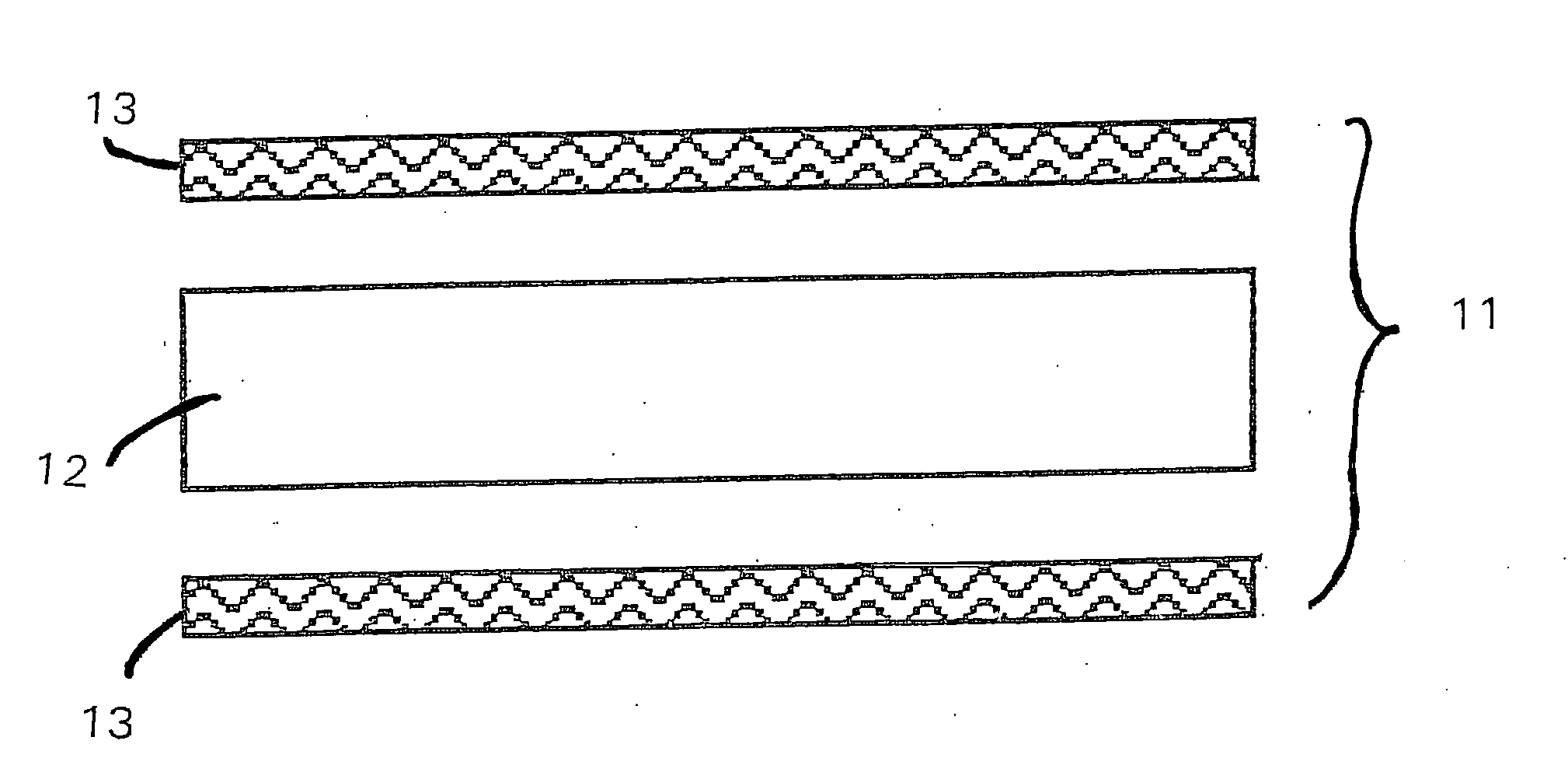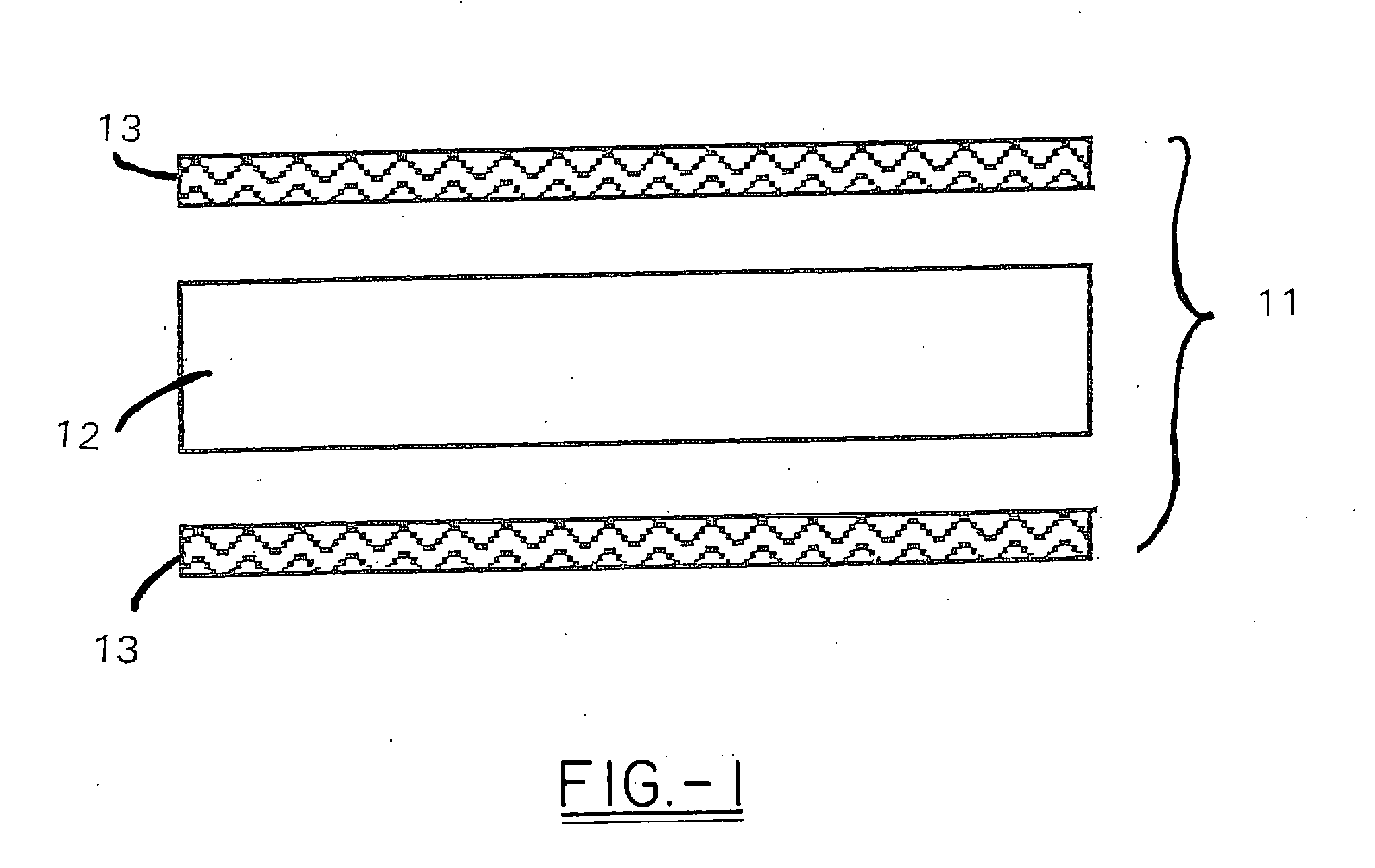High heat distortion resistant inorganic laminate
a technology of inorganic laminates and heat dissipation resistance, which is applied in the direction of natural mineral layered products, water-setting substance layered products, chemistry apparatuses and processes, etc. it can solve the problems of increased service temperature, limited flammability, smoke and gas generation, etc., and achieves high temperature resistance, favorable properties, and light weight
- Summary
- Abstract
- Description
- Claims
- Application Information
AI Technical Summary
Benefits of technology
Problems solved by technology
Method used
Image
Examples
examples
[0151] The following examples serve to illustrate and describe a preferred embodiment of the present invention but not to limit the same in that other embodiments can be utilized.
[0152] A laminate in the form of a panel was fabricated for testing with regard to thermal shock resistance as quantified by a quench steepness index value. The panel contained face sheets on both top and bottom with an insulative core. This panel was made by first curing the bottom face sheet; then bonding the core material and curing the top face sheet in a separate step. The process is discussed below along with the test results.
[0153] The bottom and top layers of the panel were fabricated using an aqueous inorganic resin slurry comprising 70 wt. % potassium silicate, 1.8 wt. % potassium dihydrogen phosphate, 9.7 wt. % clay, 2.04 wt. % boric acid, 1.85 wt. % magnesium oxide, and 3.6 wt. % of a reactive acidic glass such as borophosphosilicate. The slurry was impregnated using squeeze rolls into a silic...
PUM
| Property | Measurement | Unit |
|---|---|---|
| thermal resistance | aaaaa | aaaaa |
| temperature | aaaaa | aaaaa |
| temperature | aaaaa | aaaaa |
Abstract
Description
Claims
Application Information
 Login to View More
Login to View More - R&D
- Intellectual Property
- Life Sciences
- Materials
- Tech Scout
- Unparalleled Data Quality
- Higher Quality Content
- 60% Fewer Hallucinations
Browse by: Latest US Patents, China's latest patents, Technical Efficacy Thesaurus, Application Domain, Technology Topic, Popular Technical Reports.
© 2025 PatSnap. All rights reserved.Legal|Privacy policy|Modern Slavery Act Transparency Statement|Sitemap|About US| Contact US: help@patsnap.com



